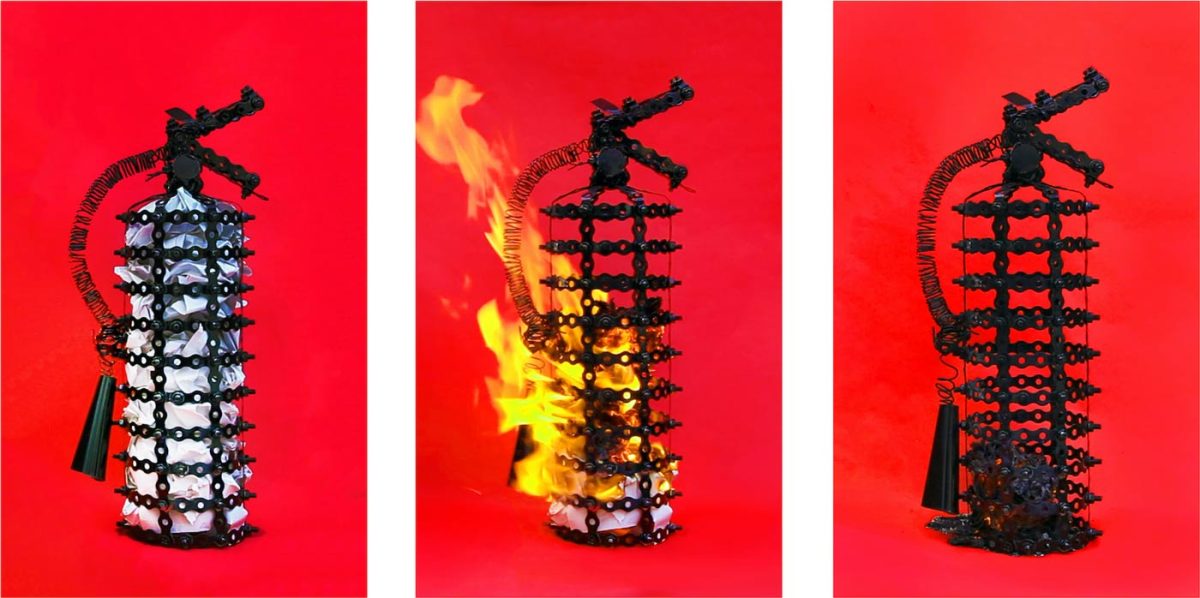More than a year ago, in February 2009, British Petroleum plc (BP) filed a plan for possible problems for its Deepwater Horizon oil rig. It concluded that problems would be unlikely, and, as stated in the plan, “due to the distance to shore (48 miles) and the response capabilities that would be implemented, no significant adverse impacts are expected.â€
Now, however, a significant adverse impact is exactly what the world has seen with the oil leak, which is set to become the largest ever in U.S. waters.
The Deepwater Horizon was an offshore drilling rig, which was collecting oil from the seabed, approximately 5,000 ft. underwater, for BP.
An explosion sunk the rig, killing 11 people, and also breaking the pipe. This leak is still releasing oil at an approximate rate of 5,000 barrels a day, which translates to be 2.5 gallons every second.
President Barack Obama has ordered a review of the event and barred new offshore drilling licenses until this review has been completed, in order to prevent future disasters.
Currently, the U.S. government is focusing on dealing with the current disaster. The government held BP responsible for the spill and is forcing them to lead the clean up measures. BP accepted these terms and has pledged to try its best to clean the spill.
“We are taking full responsibility for the spill, and we will clean it up, and where people can present legitimate claims for damages we will honor them,†BP CEO Tony Haward said. “We are going to be very, very aggressive in all of that.â€
BP, however, was not completely responsible. Although it was the main developer of the oil field, the Deepwater Horizon was leased to BP and also run by the oil company Transocean.
Even so, BP has indeed taken an aggressive role in cleaning up the oil slick. With the federal government’s help, BP has tried using oil dispersants and other chemicals to recover the oil, but their effects have been limited.
The depth at which the oil is being collected means that it is capable of mixing somewhat with the water to create a thick liquid that is harder to burn, or evaporate. Oil-consuming microbes also have a hard time getting rid of the substance. Thus, many of the common clean up methods are severely limited.
Efforts to try and close the leaks using remote controlled undersea vehicles have also failed.
BP engineers decided to try to funnel the leaking oil to the surface for collection, but the domes that were built to act as funnels were rendered useless when gas crystals formed on them, preventing them from sinking into the water.
Fortunately, BP has a plan B: drilling a relief well. This well would intersect the main oil well and allow BP to pump in liquids that would stop the leak. Although preparations have already been made, the process will take two to three months and cost $1 million.
This delay will significantly increase the consequences for the environment, as well as the economy that depends on the environment. Already, 400 species are threatened by the oil spill. The delay will allow the oil to spread even further, and increase this threat.
The threat on the edible marine life is also a threat to the fishing and shrimping industries. Initial estimates predicted that the fishing industry alone would suffer a $2.5 billion loss.
If the oil reaches the Florida coast, then the tourism industry could faces costs of $3 billion, because of the plethora of beaches that would need to be shut down. In preparation for this, staging areas have been set up on many susceptible beaches.
President Obama has committed to helping this crisis come to a close and acknowledges that it might take some time. But he is determined to keep supporting the relief efforts.
“I’m not going to rest — and none of the gentlemen and women who are here are going to rest — or be satisfied until the leak is stopped at the source, the oil on the Gulf is contained and cleaned up, and the people of this region are able to go back to their lives and their livelihoods,†Obama said.







Patricia V. Knox • Jun 8, 2010 at 8:55 am
While awaiting the arrival of the Dutch skimmers, wouldn’t it be wise to attempt to remove some of the oil? If the pumps used on the portable toilets can pump the kind of matter they do, then these same pumps can easily be used to vacuum the oil from the water and discharge it into barges outfitted with lower pumps. Since water and oil naturally seperate, the pumps could pump the lower section of the barges until the discharge shows oil which would be indicative of mostly oiled filled barge. Replace and on to the next. Fishing boats, thus outfitted could be far more effective than boats with only boom. These boats could be valuable at any placement from the most to the least concentrated areas. One method of cleanup to add to the list.
Thanks!